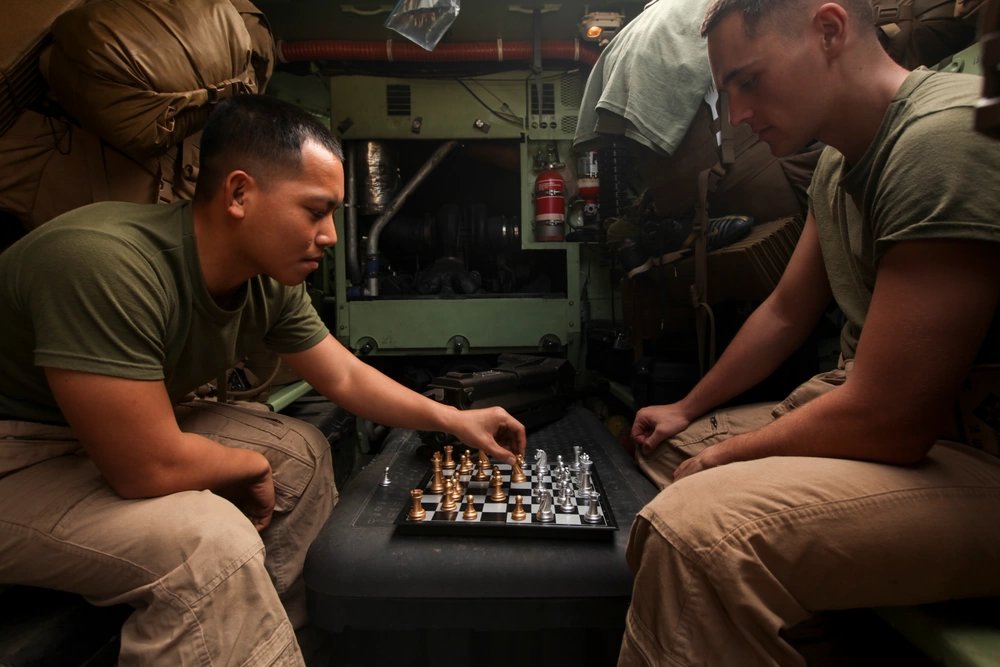

The military has utilized chess as an analogy and even as training for combat from prehistoric days to the modern era. From the 6th Century, when the board game was invented, to the 21st Century, chess has emerged as a intellectual game. It began as an Indian game known as Chaturanga and was explicitly used by military forces for entertainment and training.
To play the game, participants need various valuable qualities of the mind. These qualities help them envision the next moves and set up your opponent for failure. If taught from a younger age, chess can also help ordinary citizens go by their daily activities smoothly and strategically. For the longest time, chess has been referred to as a nerdy game because it helps nurture the brain.
Chess and other abstract strategy games have been shown to improve intelligence, critical thinking, and the cultivation of a military strategy. It would be judicious to balance conventional ways as the defense incorporates contemporary methodology such as collaborative learning, simulation, online learning, and scholarly blogs. Playing chess frequently stimulates inventiveness and originality, promotes boldness and decisive action, and delivers expertise with making decisions under pressure without the danger of resource investment that other approaches need.

Serving in the military does not always assure professional competence, therefore soldiers must always be nurtured to gain more skills. Although chess is not a war game, it is a medium for establishing desirable traits for commanders. A military leader ought to be patient, innovative, visionary and adaptational. There is no better and cheaper way of instilling these qualities in a commander or other force member than chess.
Of course, playing chess does not automatically generate brilliance in either academics or war, nor does it serve as a prepping for modern battlefields’ physical demands and intricacies. Still, there is a tremendous potential for significant guidance in the present and developing methodologies that promote intellectual fighting power improvement.

To many people, being a soldier entails having extraordinary physical abilities like might and speed. While this is true, military force members are encouraged to invest in intangible military concepts that are realistic, like chess. The game is literally inexpensive and doesn’t require too much time to play hence one of the best training methodologies available for the military profession. The visualization of war through games is an old hat, but that doesn’t mean it’s no longer helpful. Modern warfighters need to be adaptive thinkers and must be able to modify actions when confronted with difficult situations.
It is not unusual to find commanders struggling with adaptive thinking, but after engaging in chess, their adaptability increases. Like in chess, soldiers and commanders need to employ both mental and physical tactics during combat. Proper planning during wartime is primarily the technique of deductive logic paired with intuitiveness. This blend is meant to assist a soldier in comprehending and tolerating unpredictability, which is the distinctive setting of conflict in many ways.
Chess today has evolved, and several variations are available. All variations can be used successfully to educate young troops and help envision modern warfare from better angles. The most commonly played variation is the international version, formerly known as Chaturanga. Team leaders will often look for tasks to do with their troops to make them look busy. Training, even unconventional training such as chess, can be the difference between having your guys sent on a working party or not.
